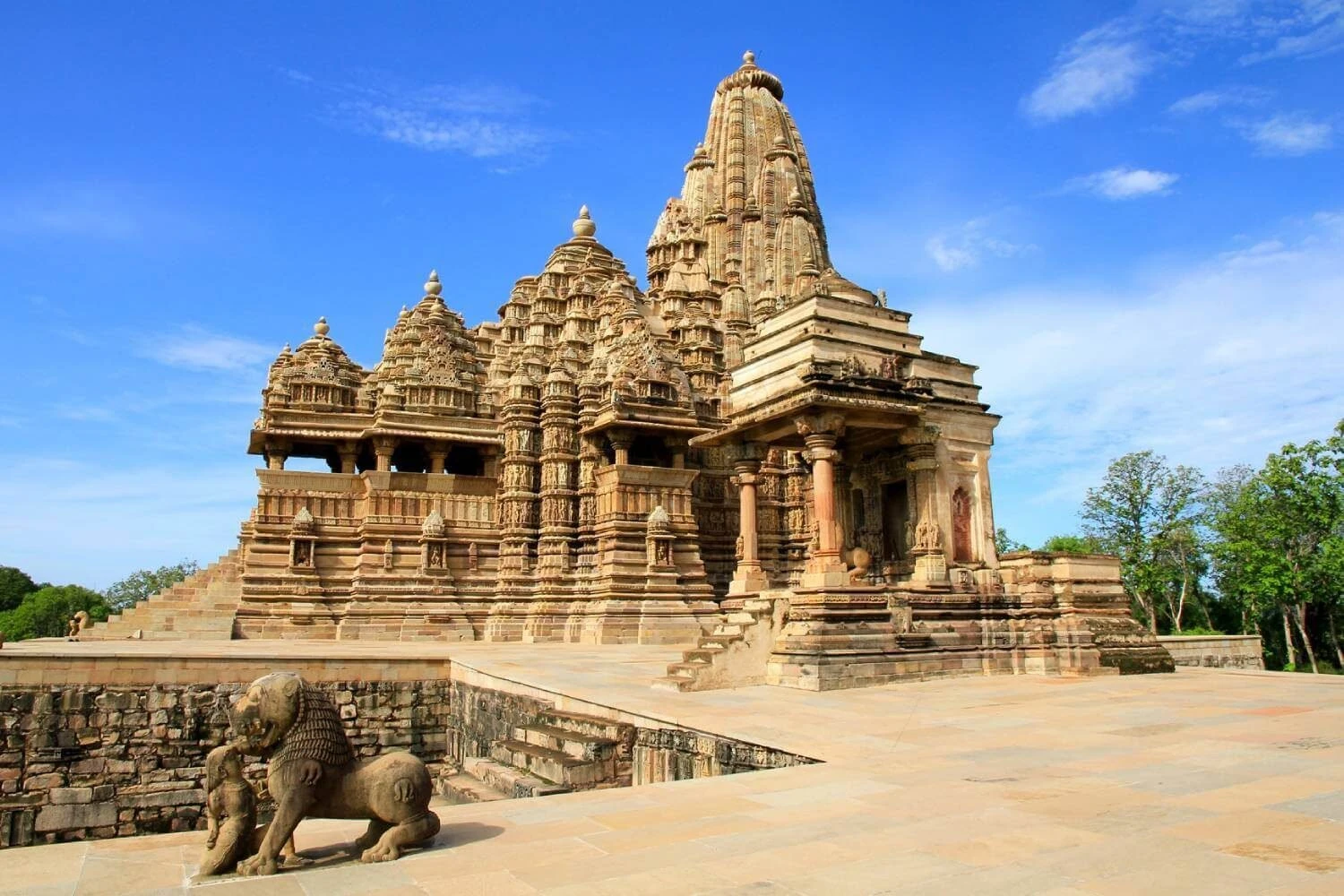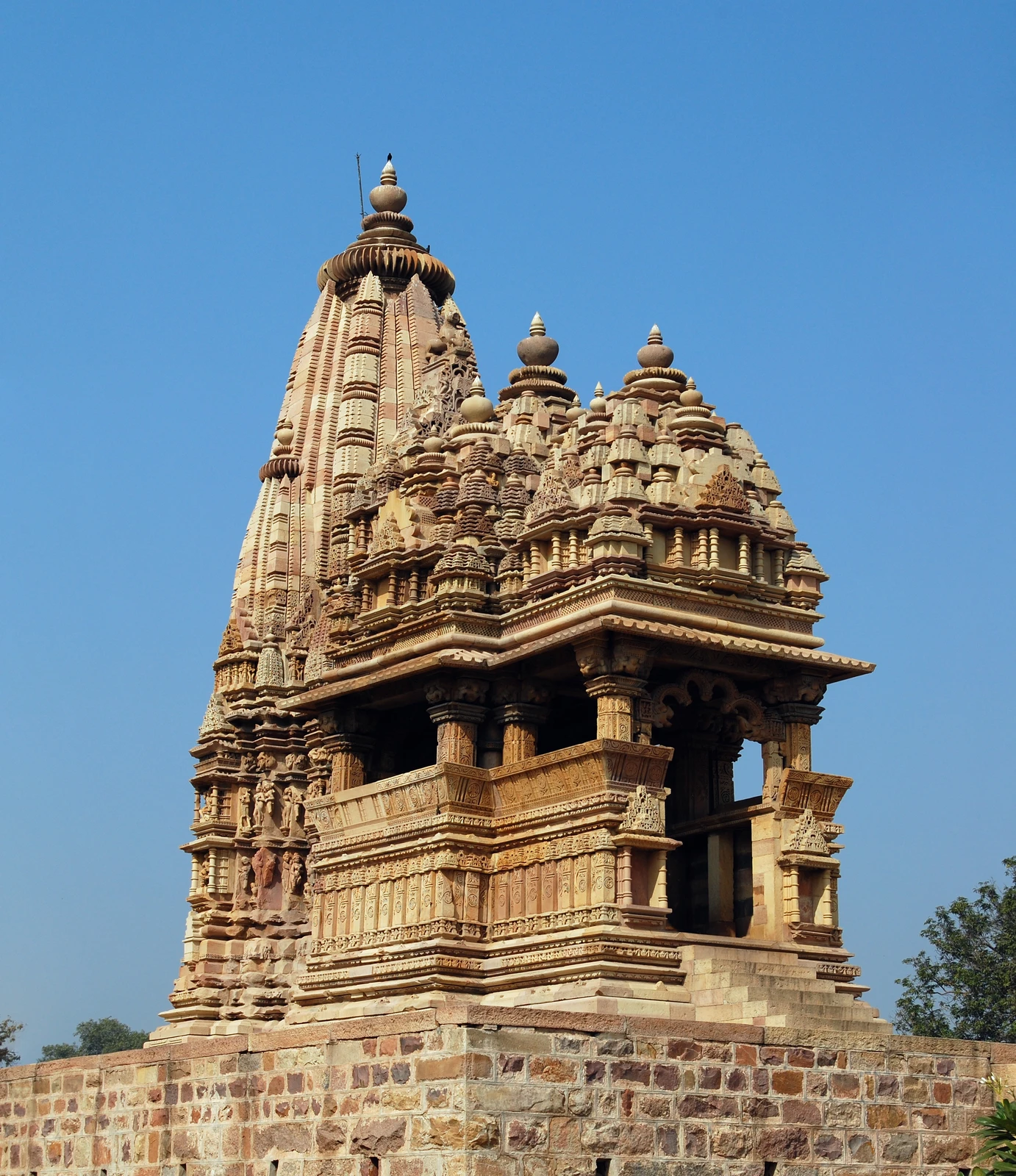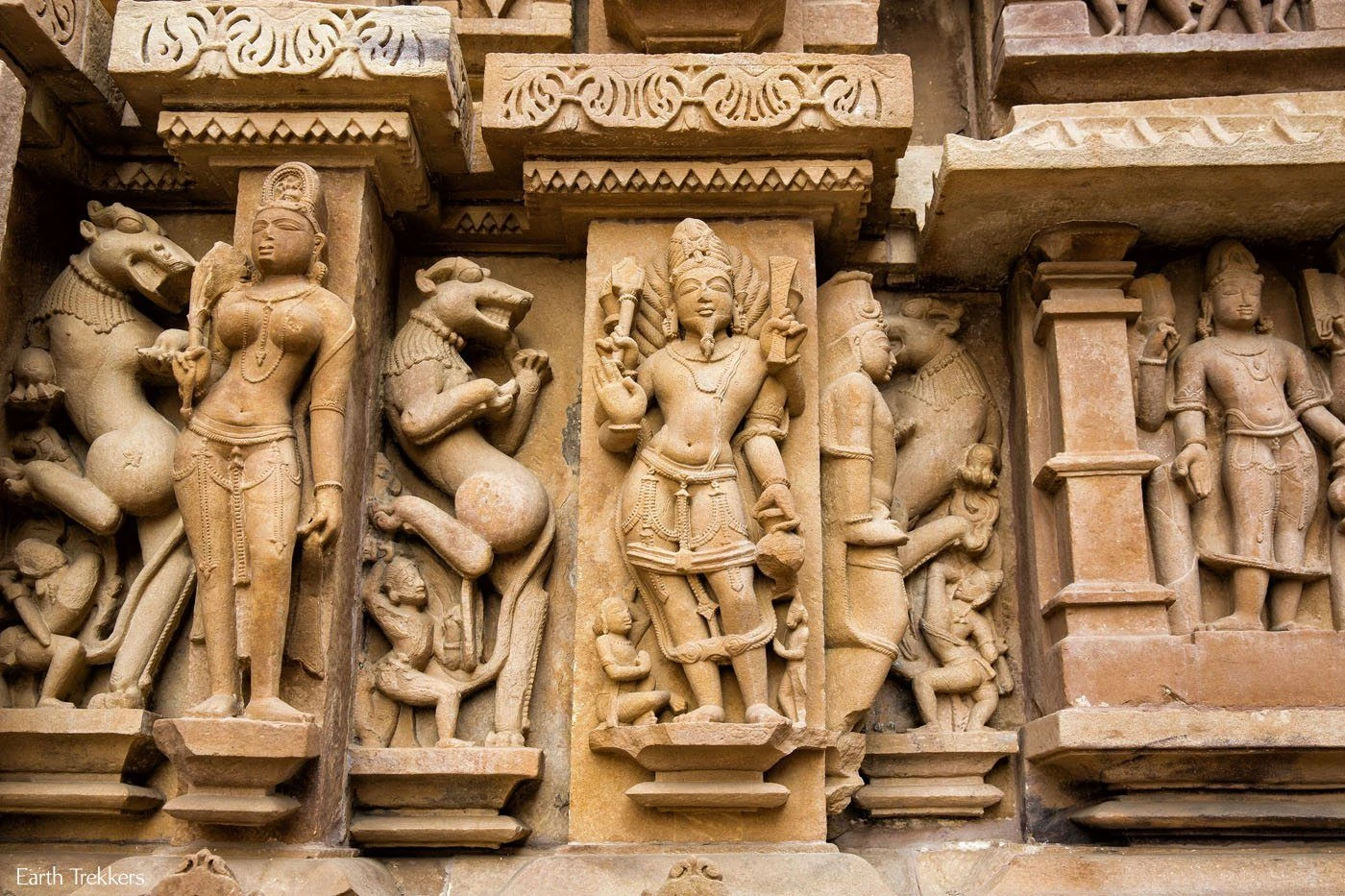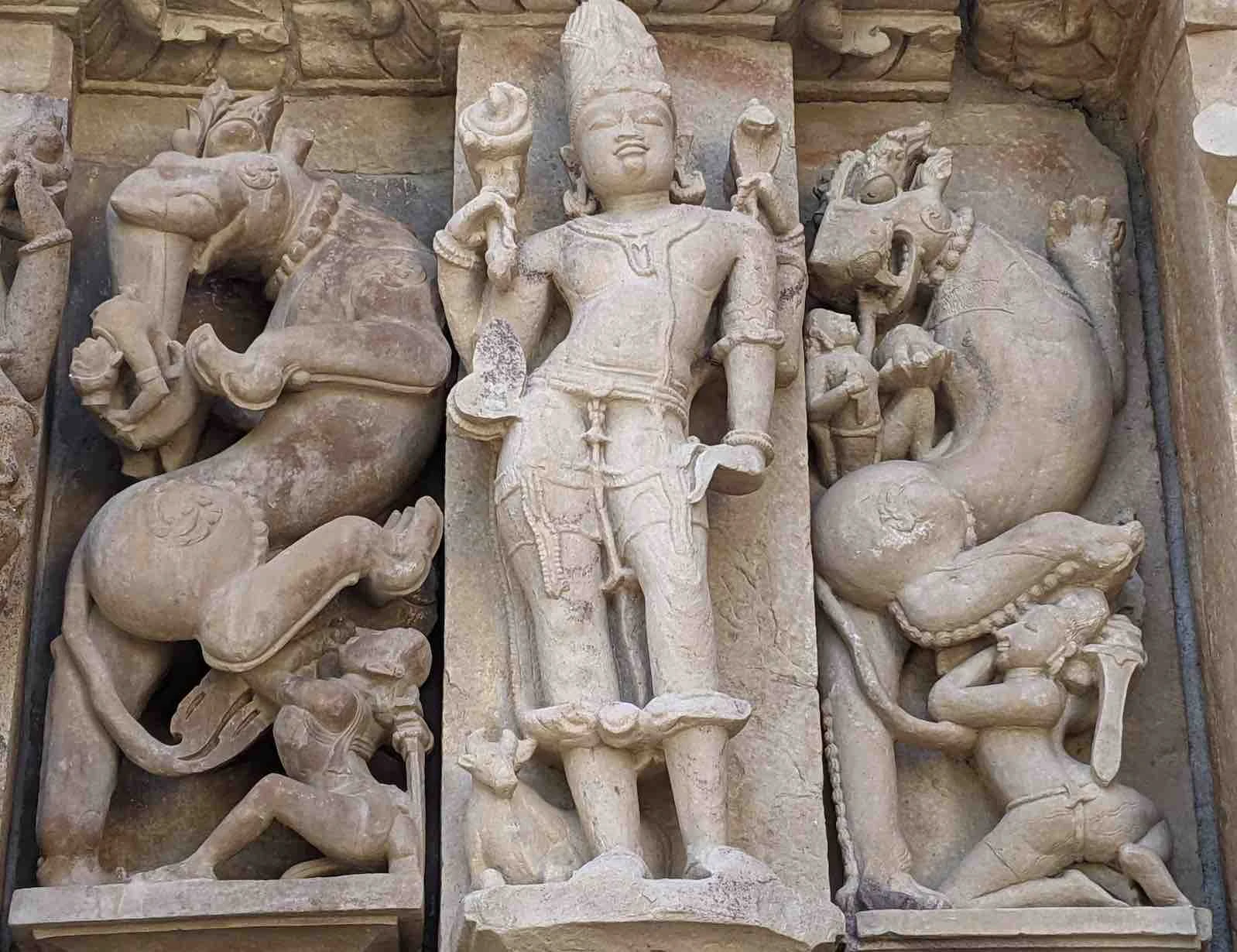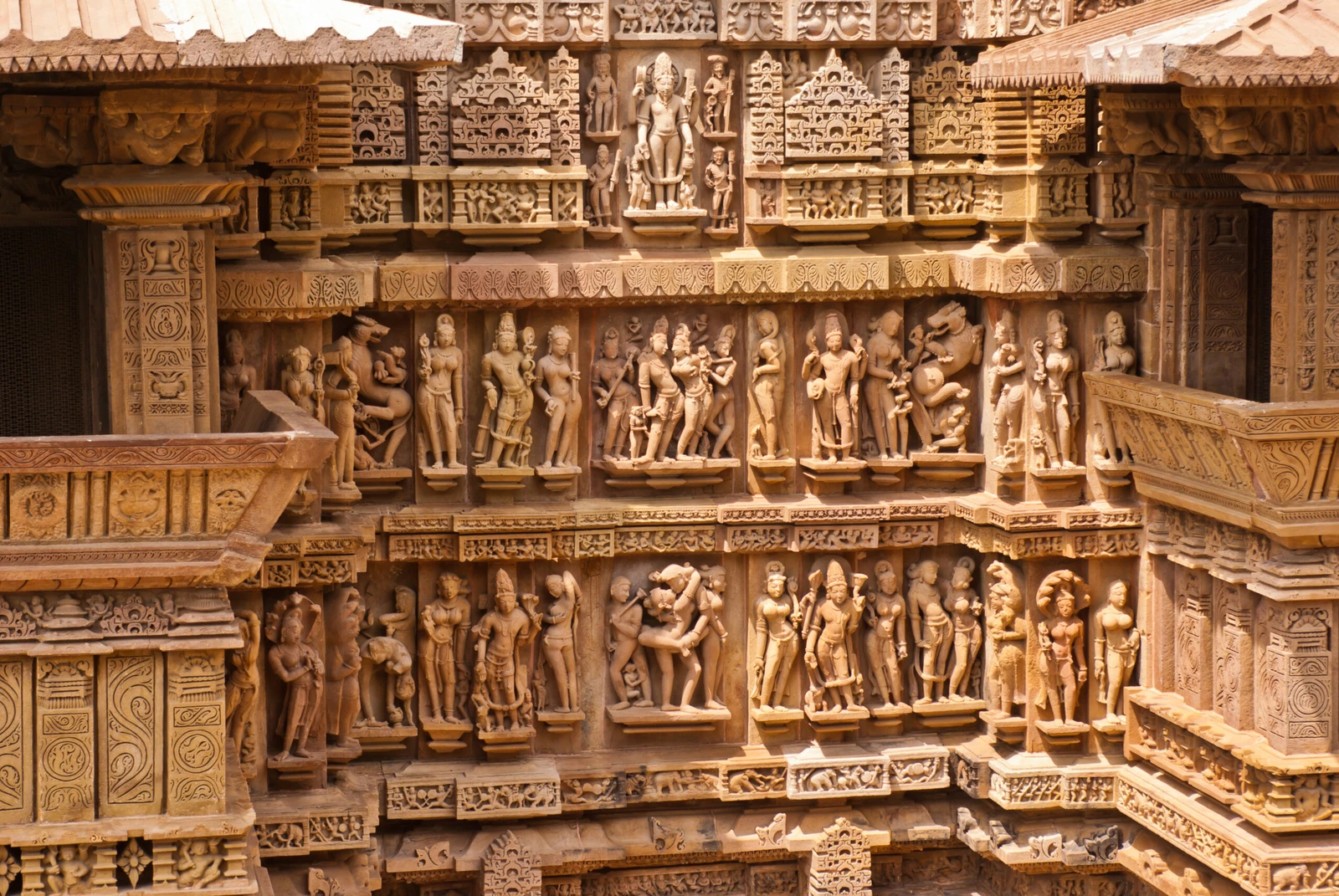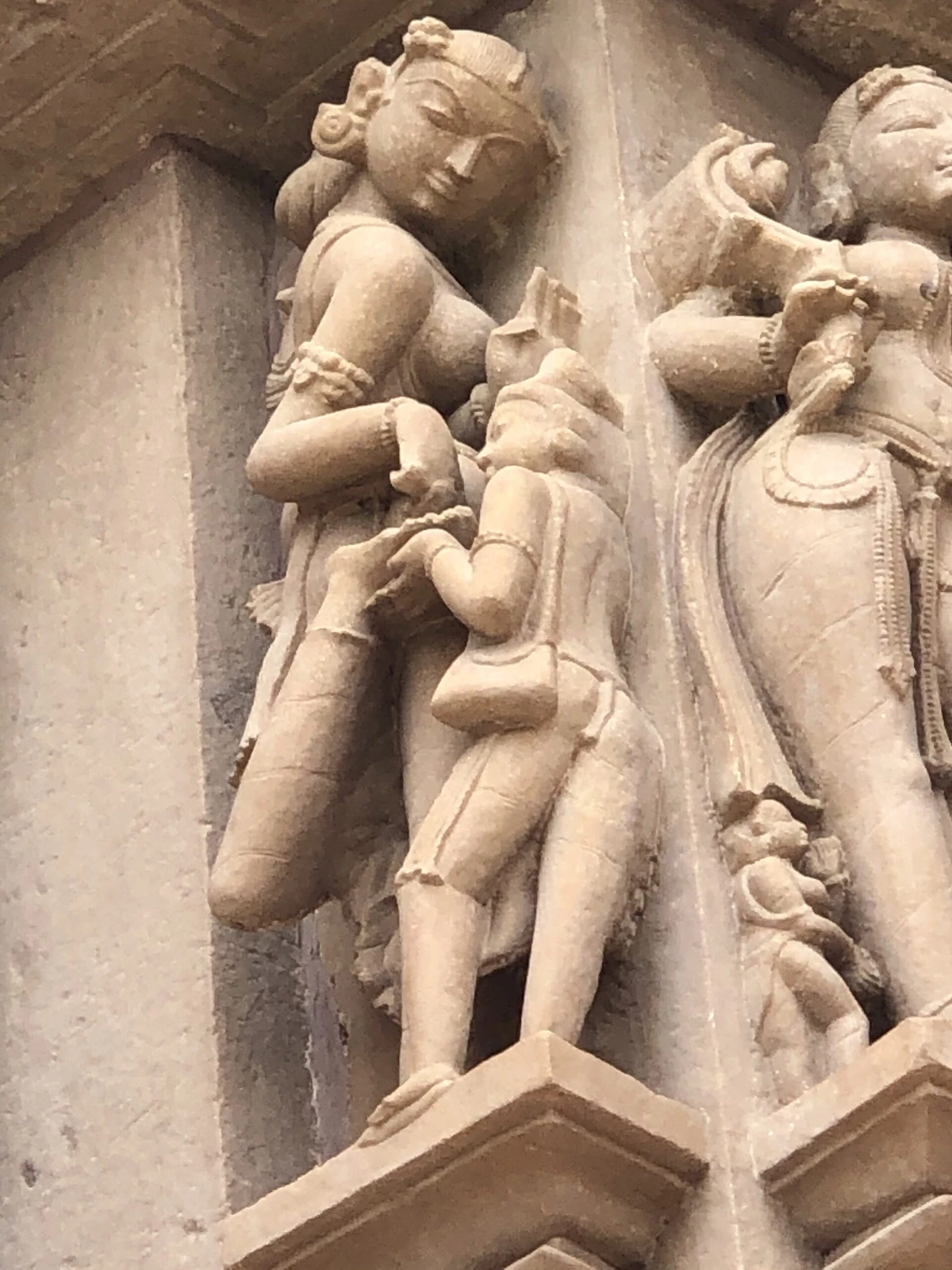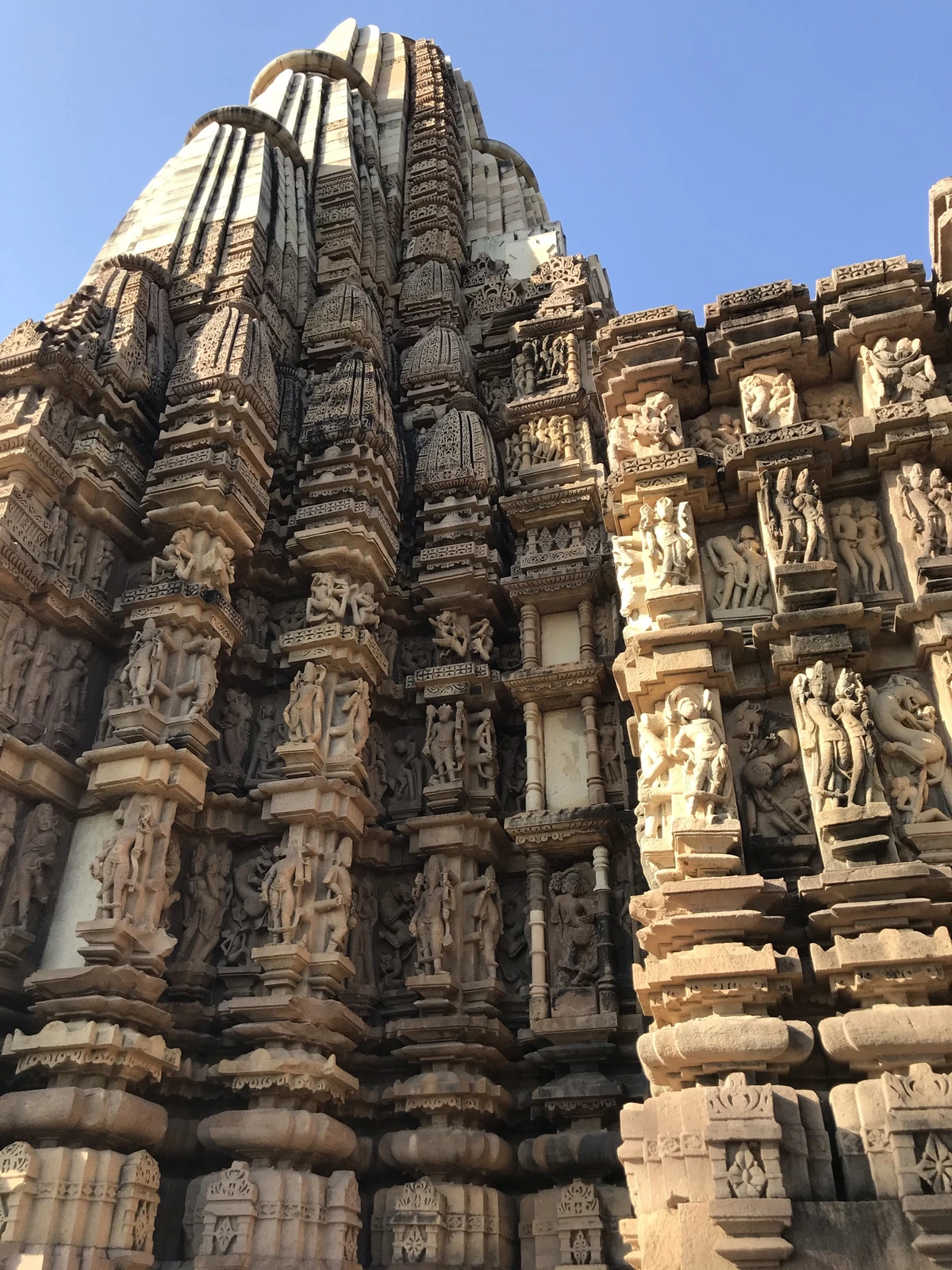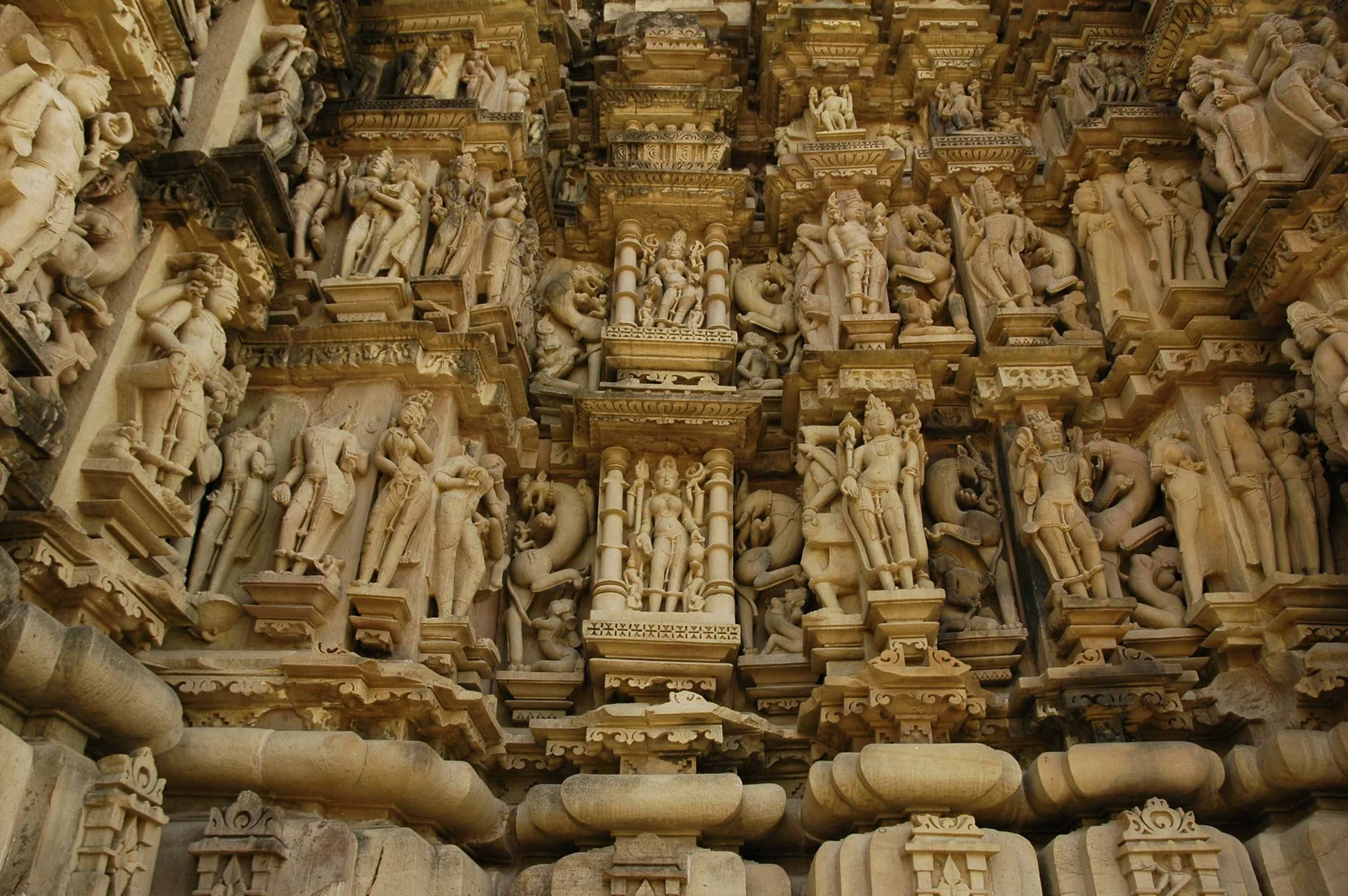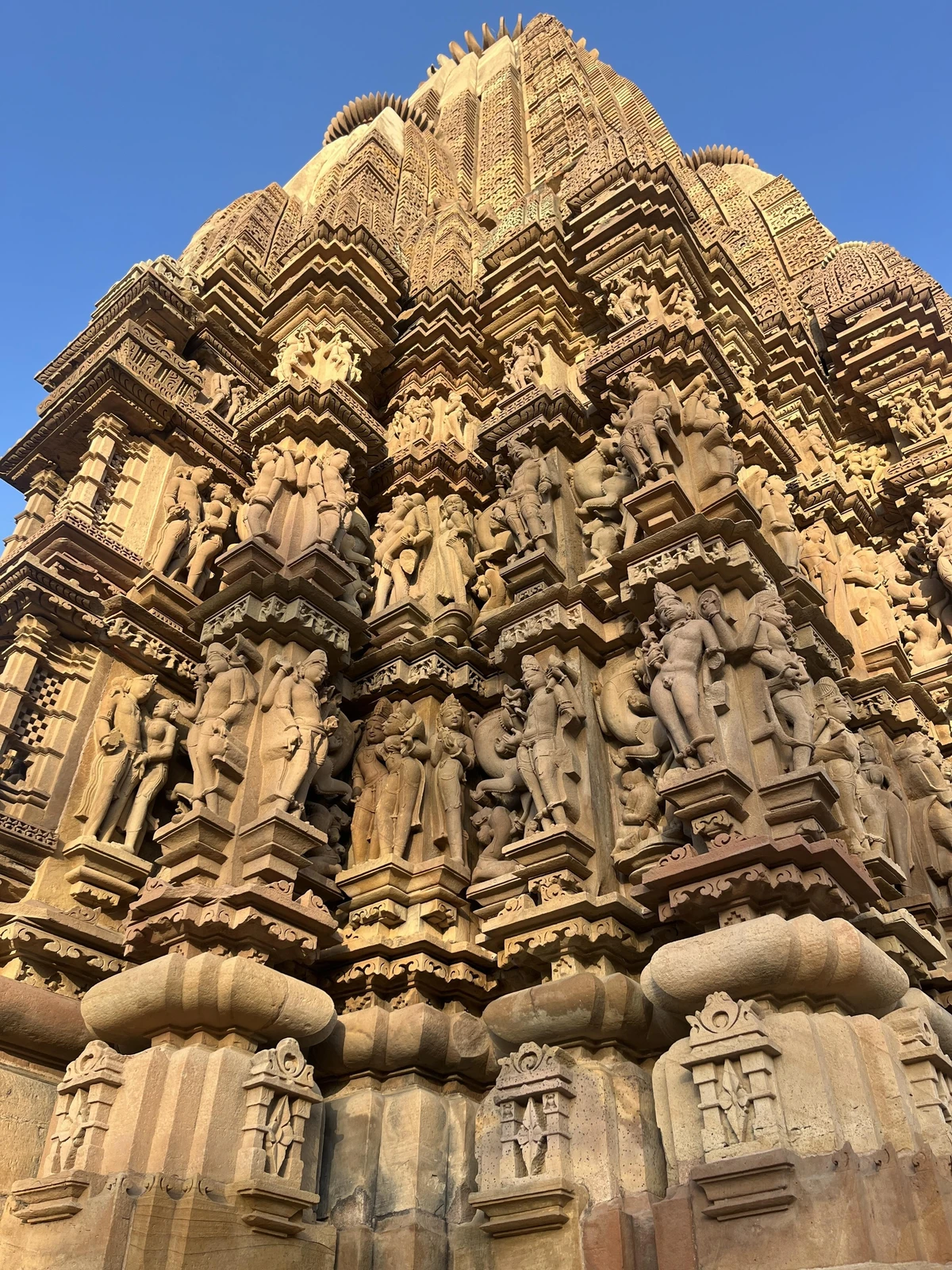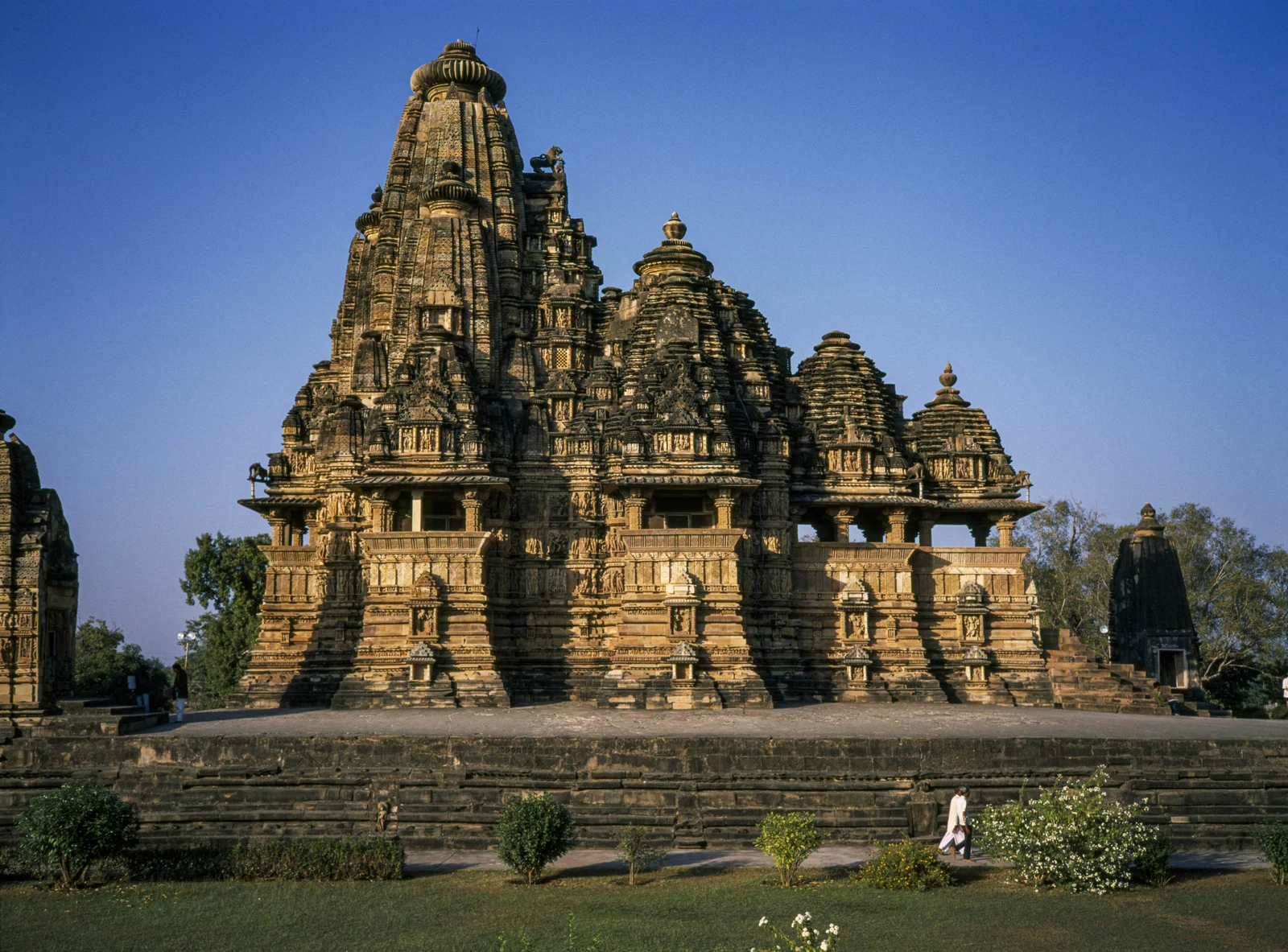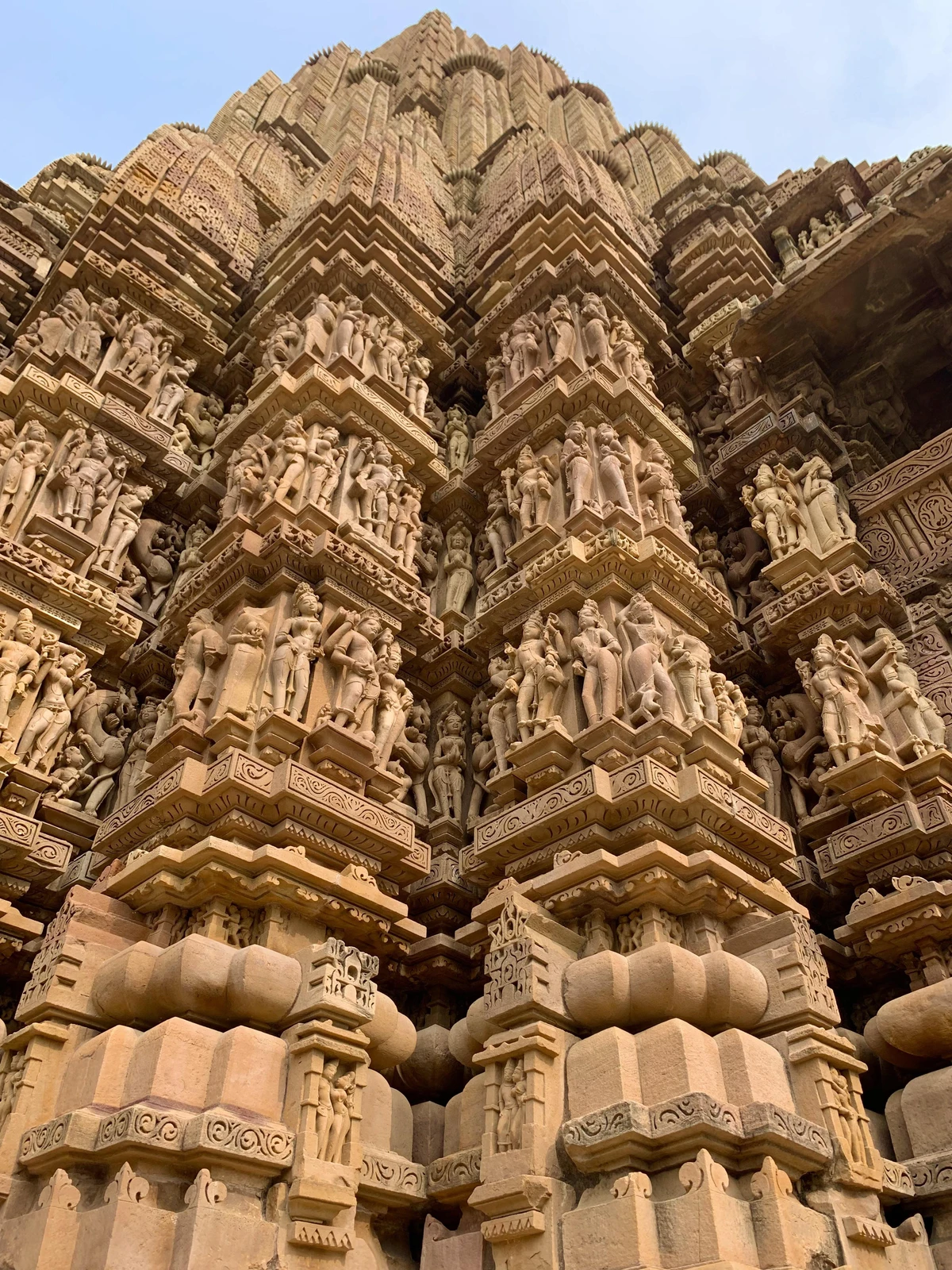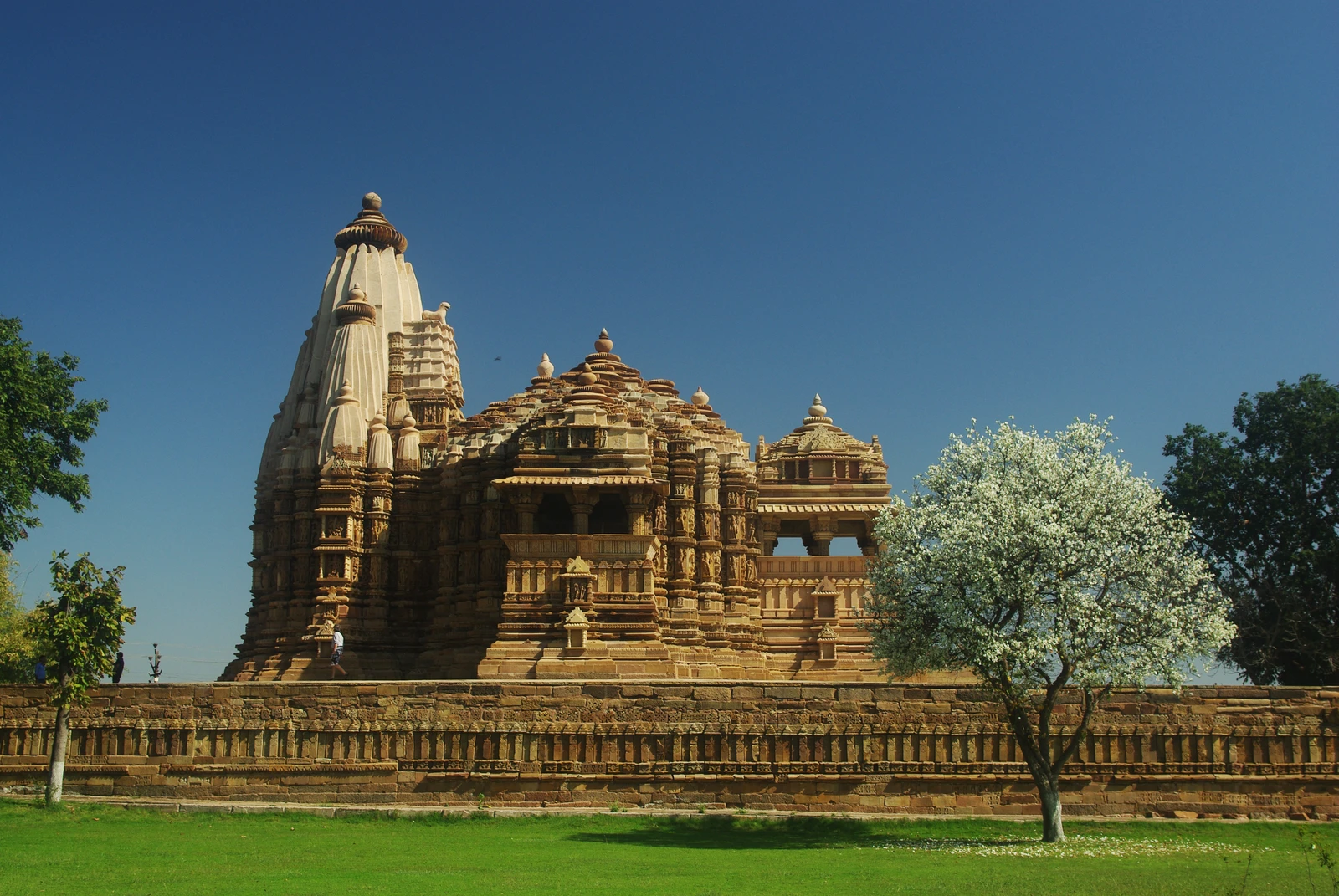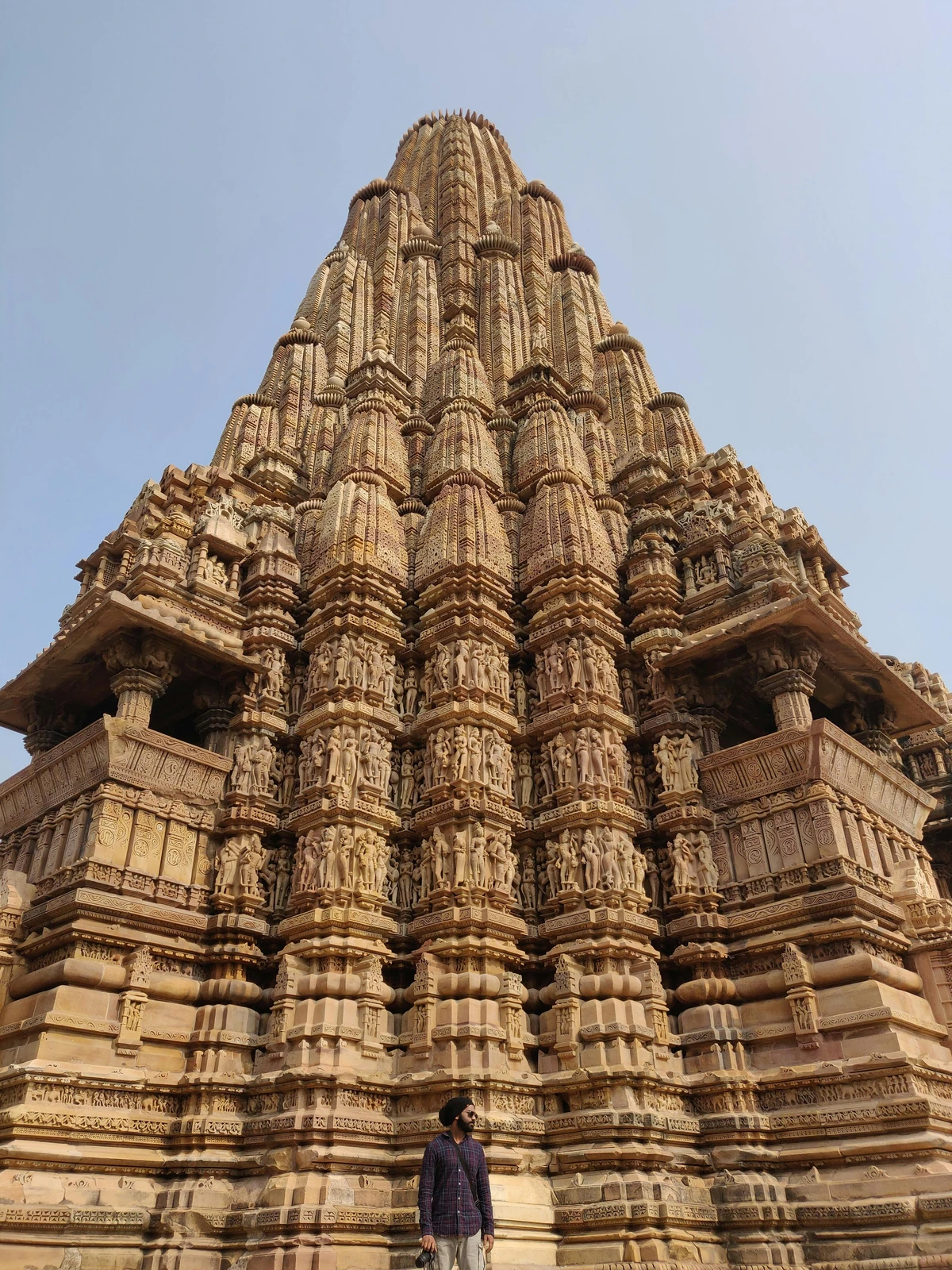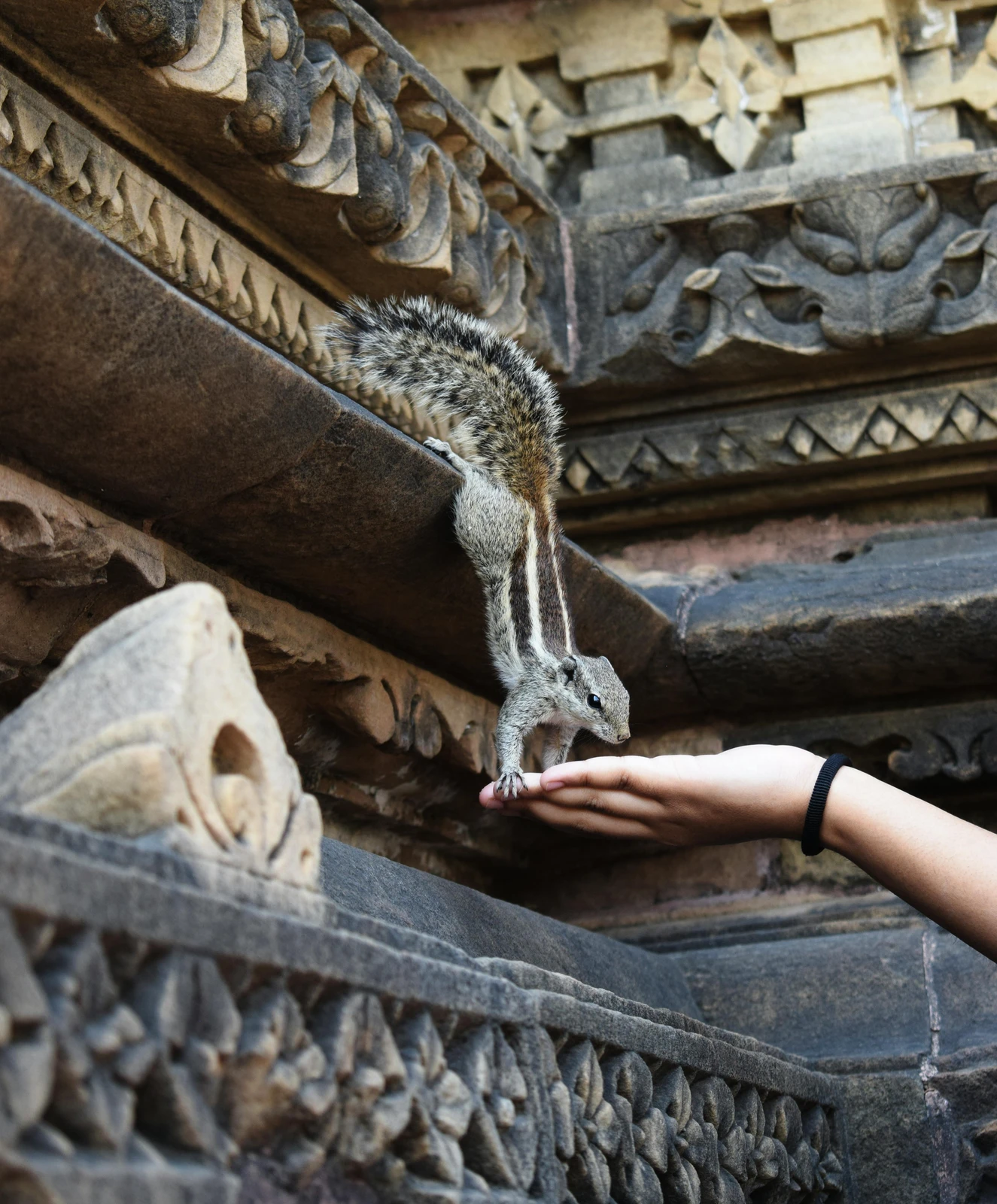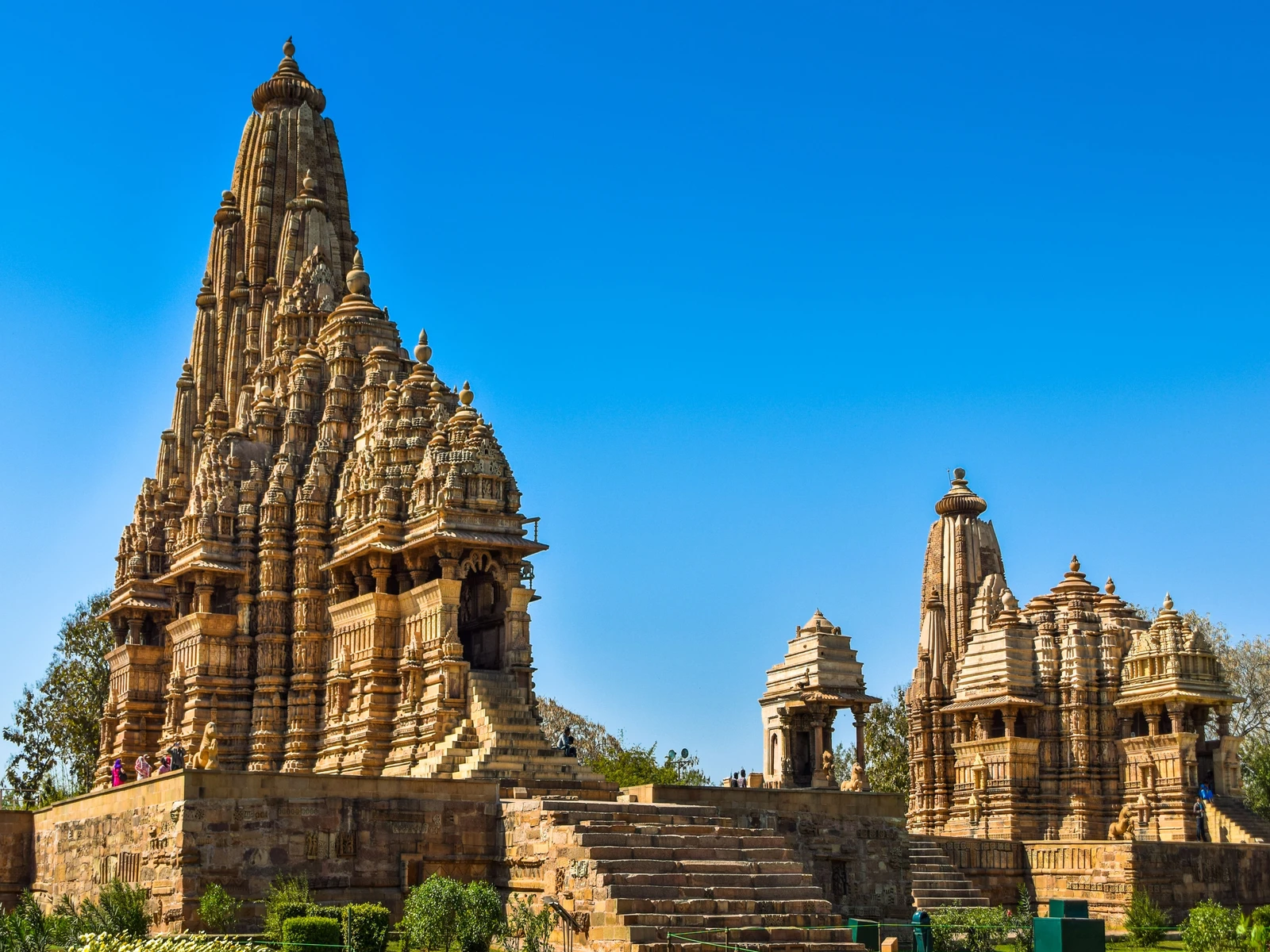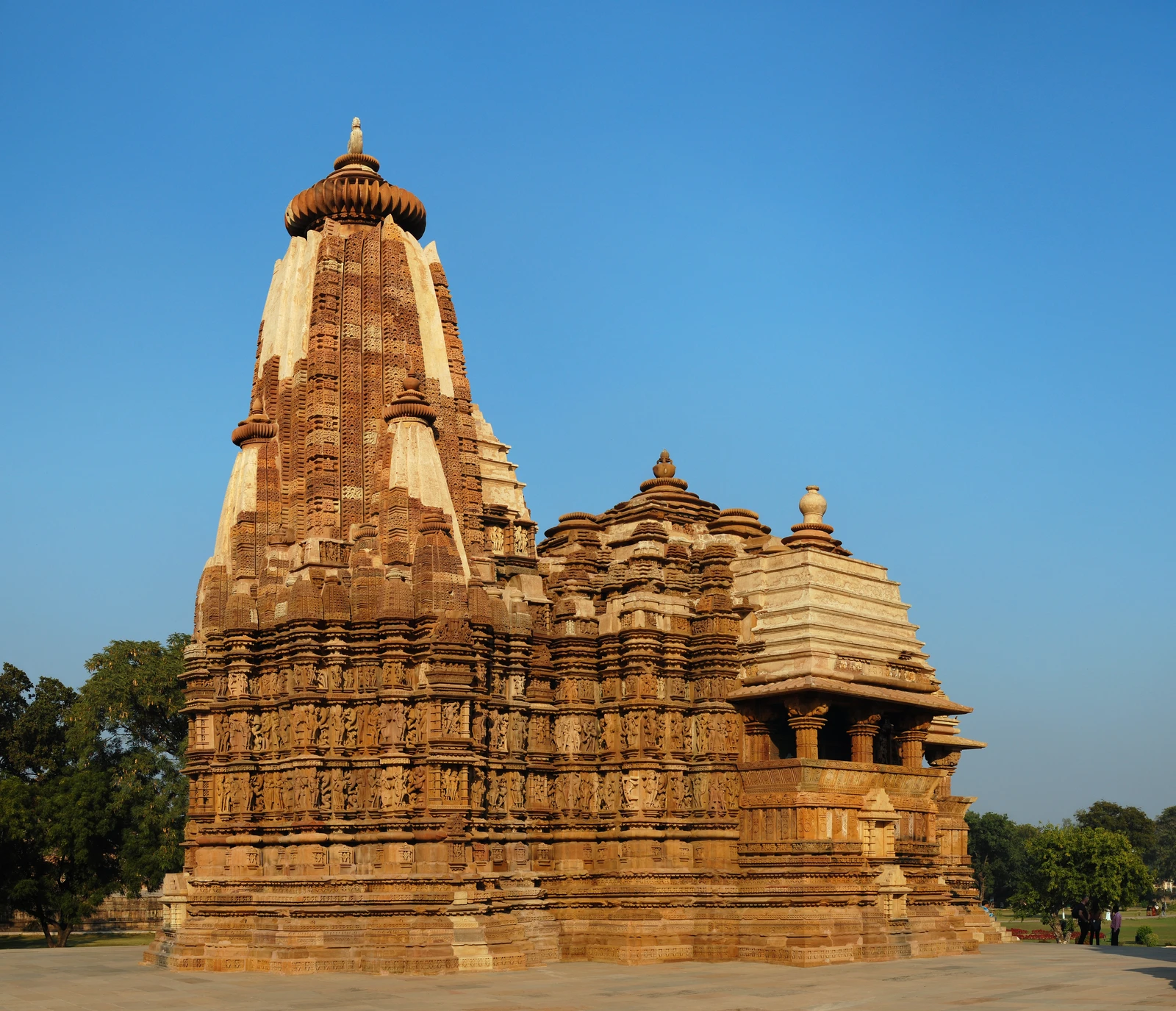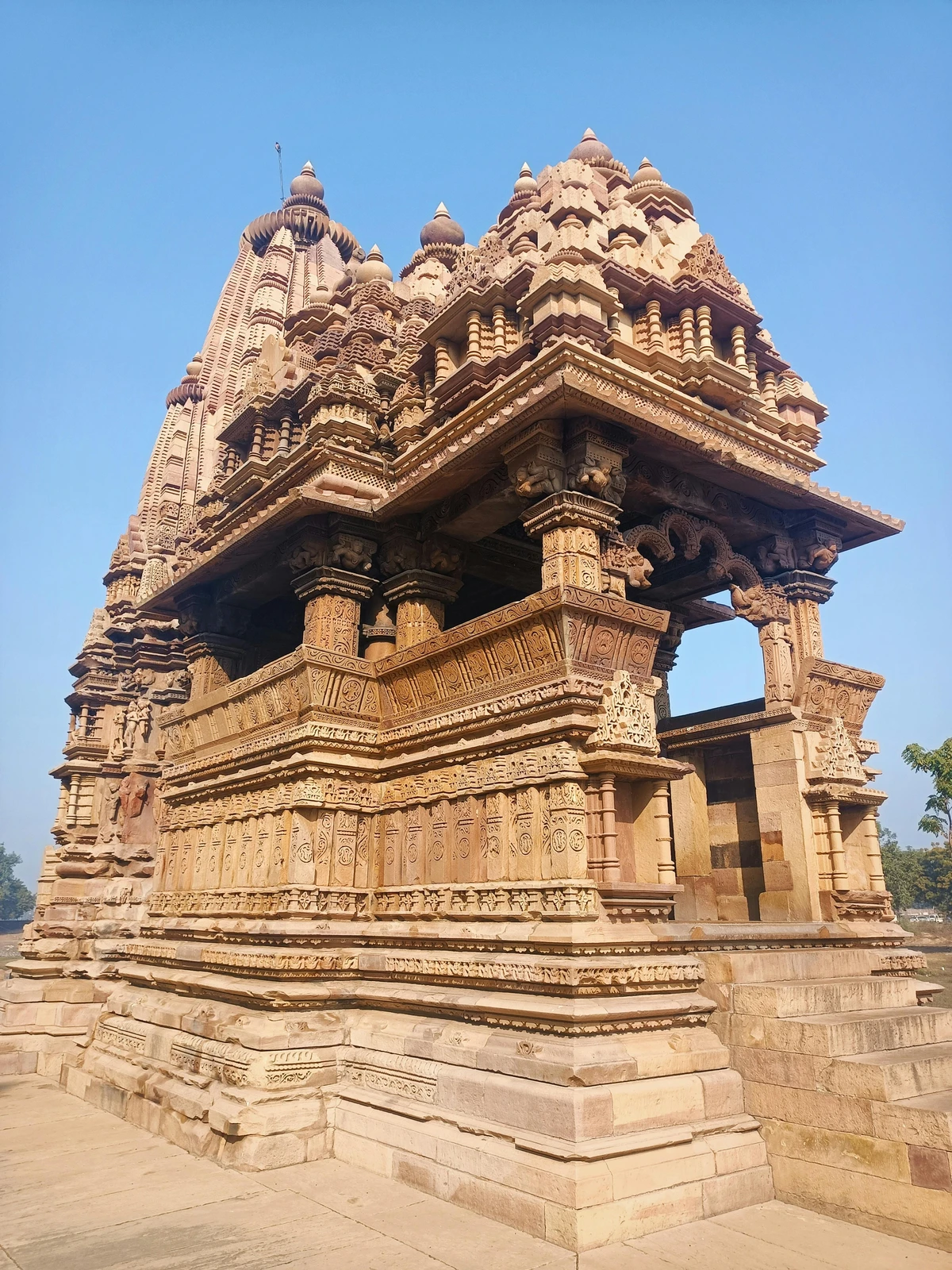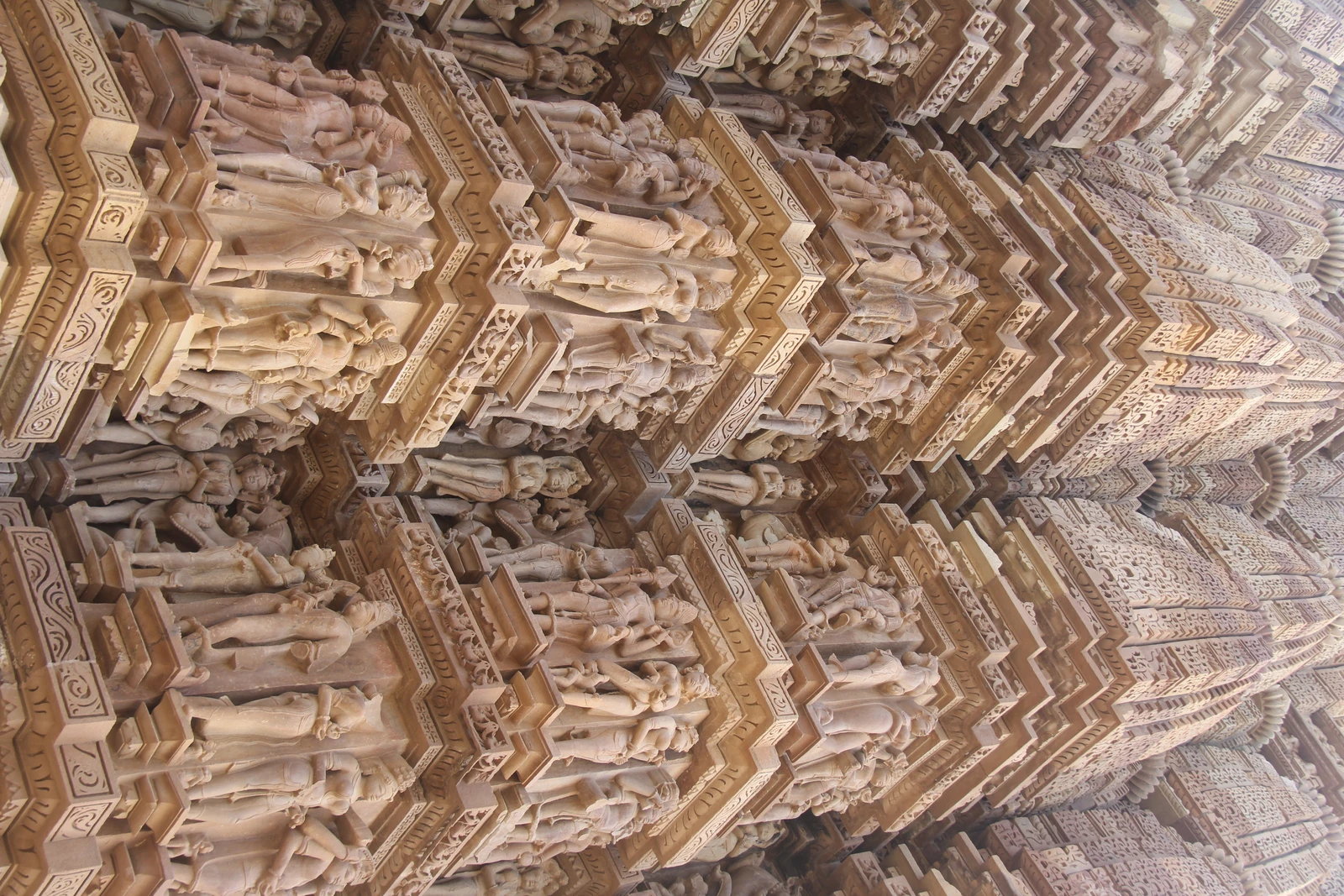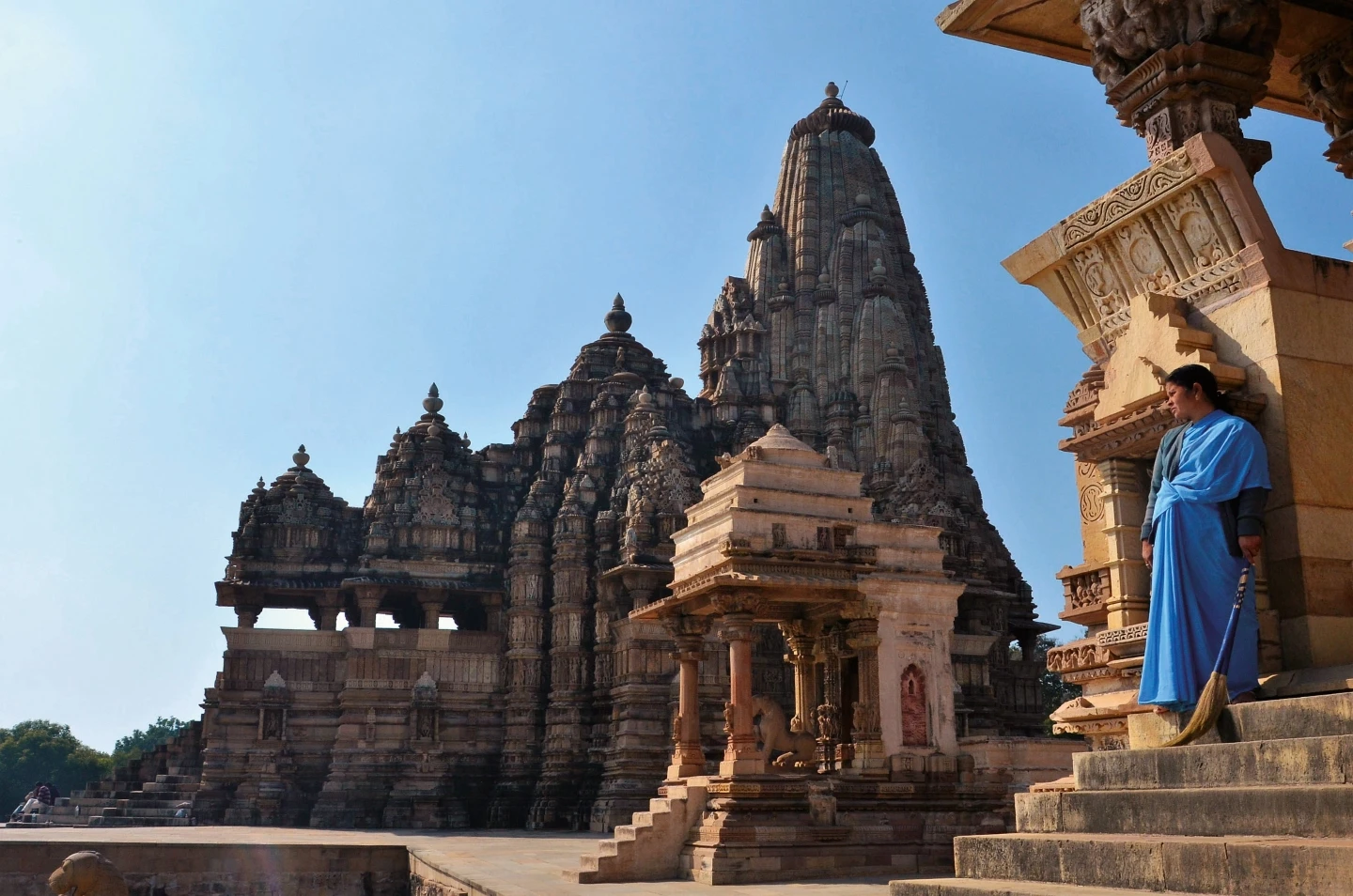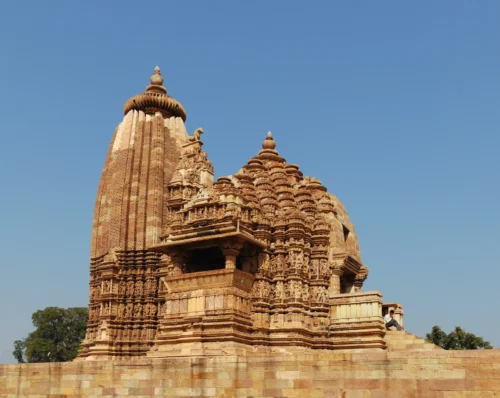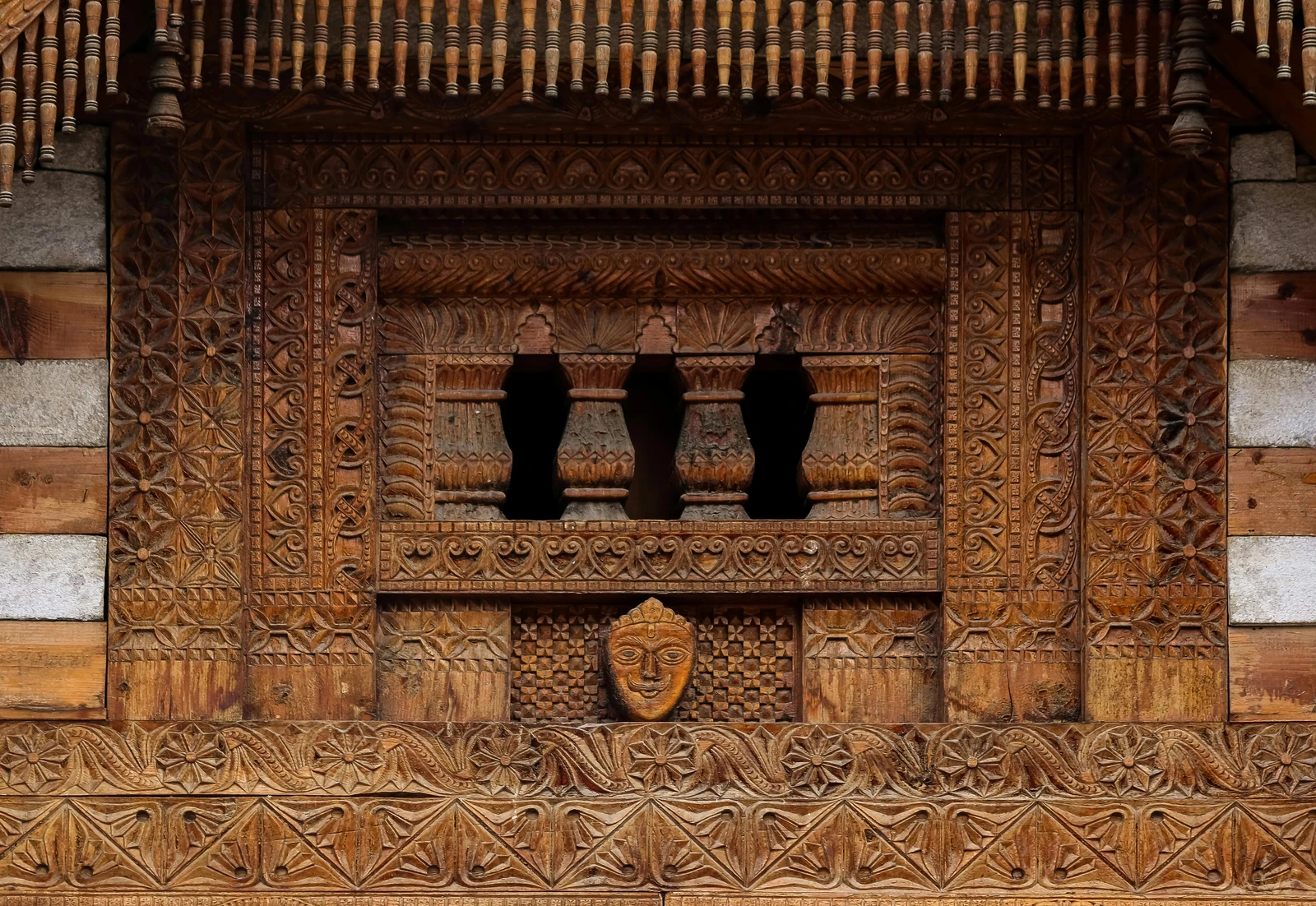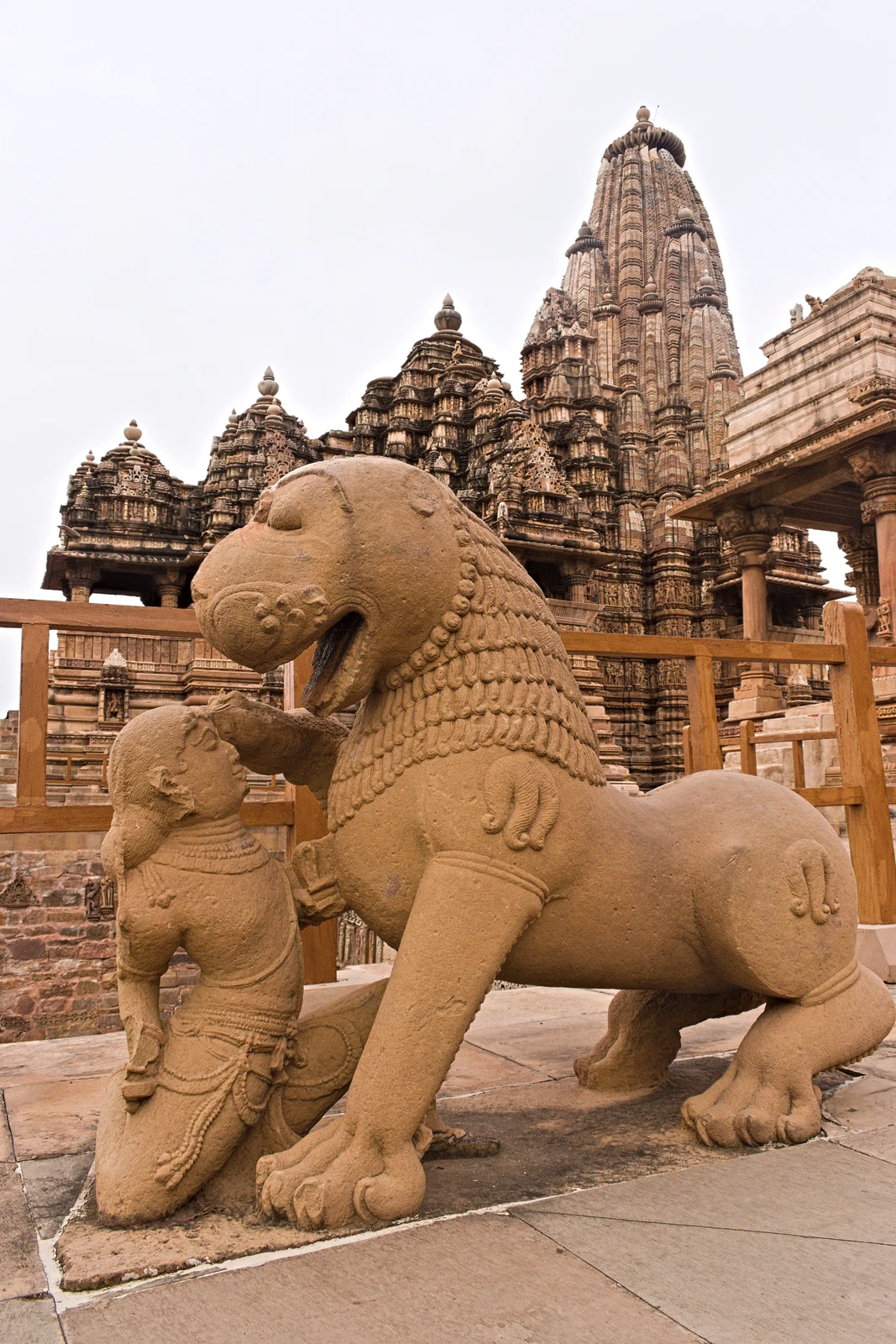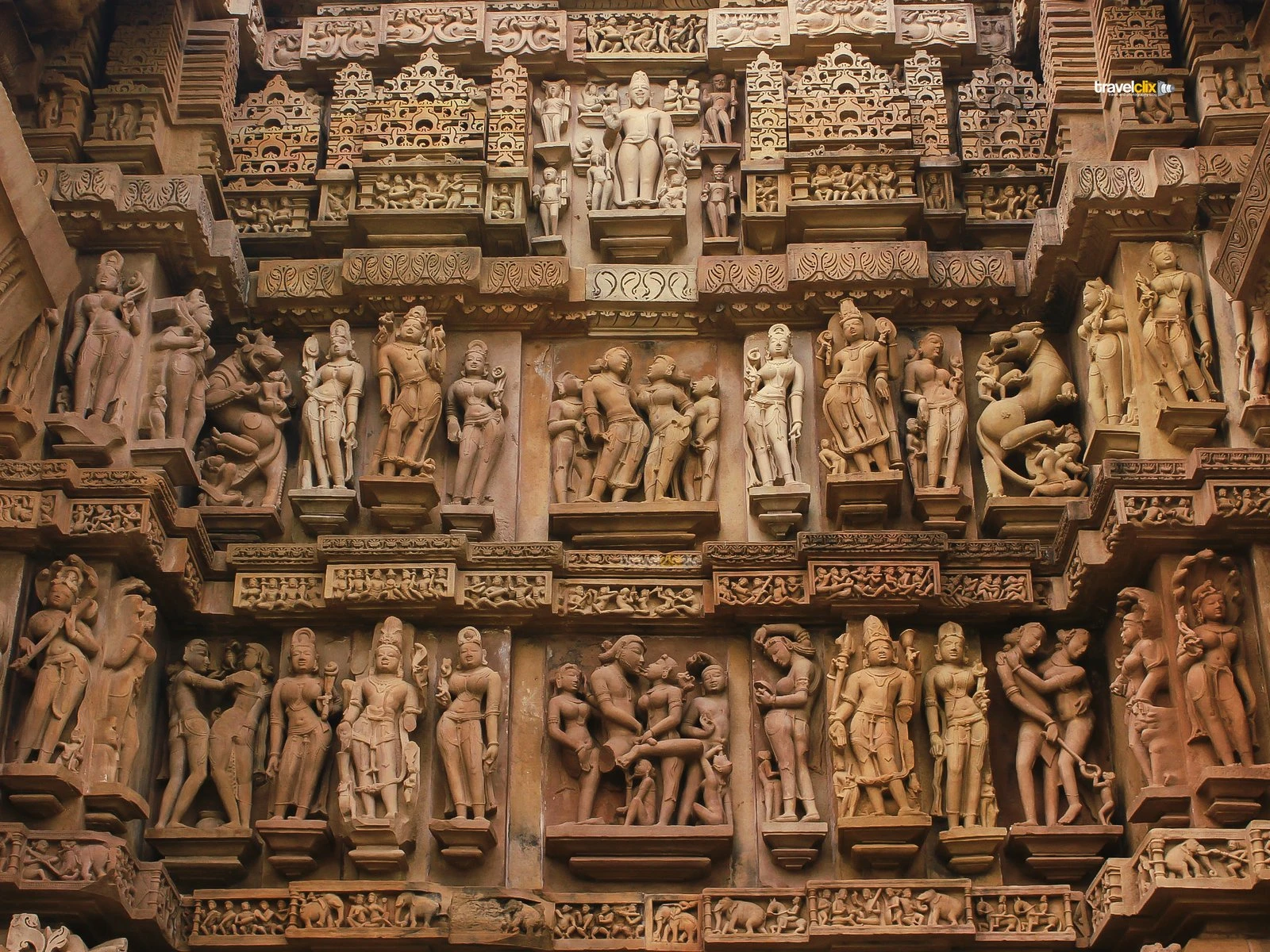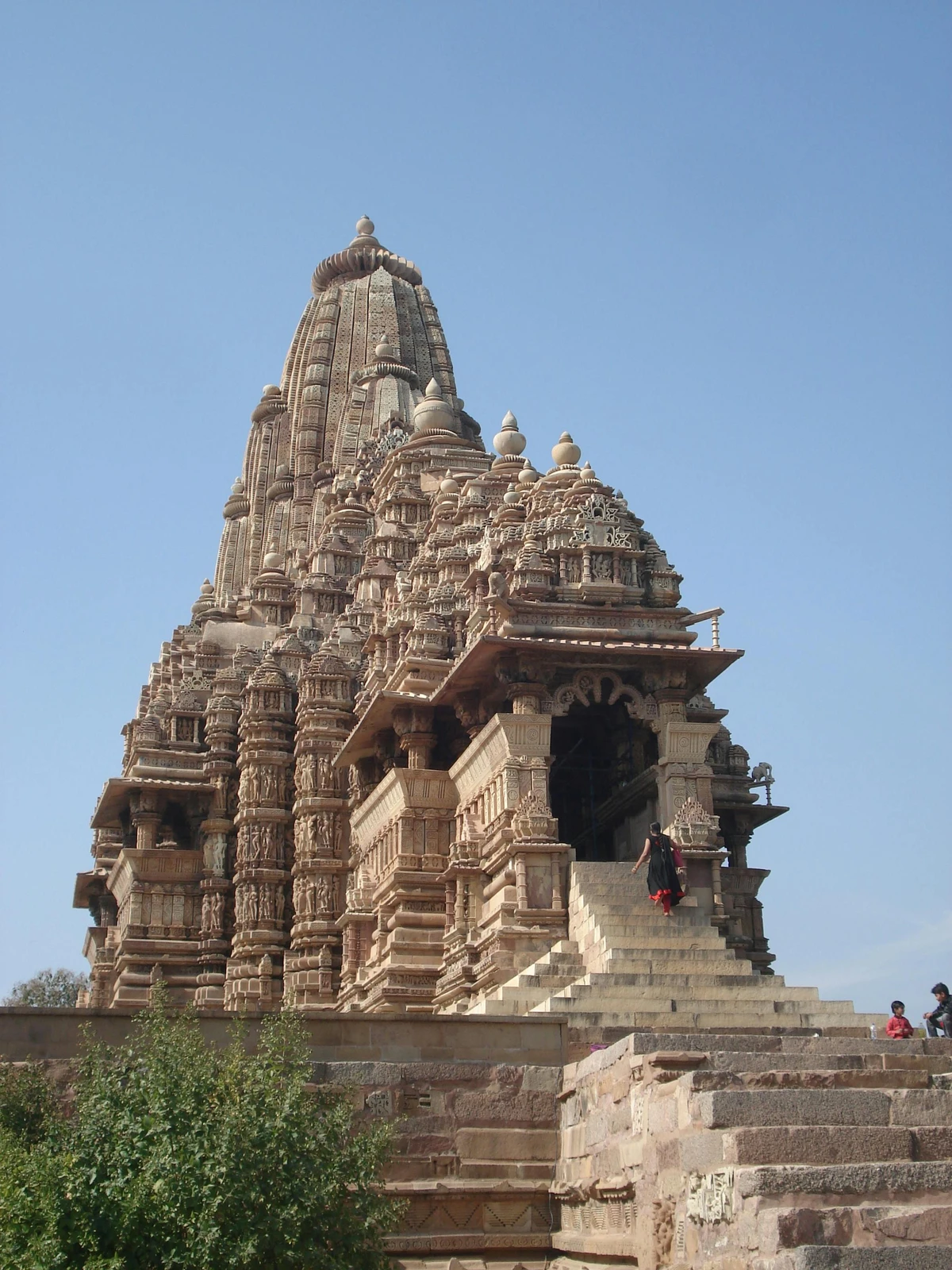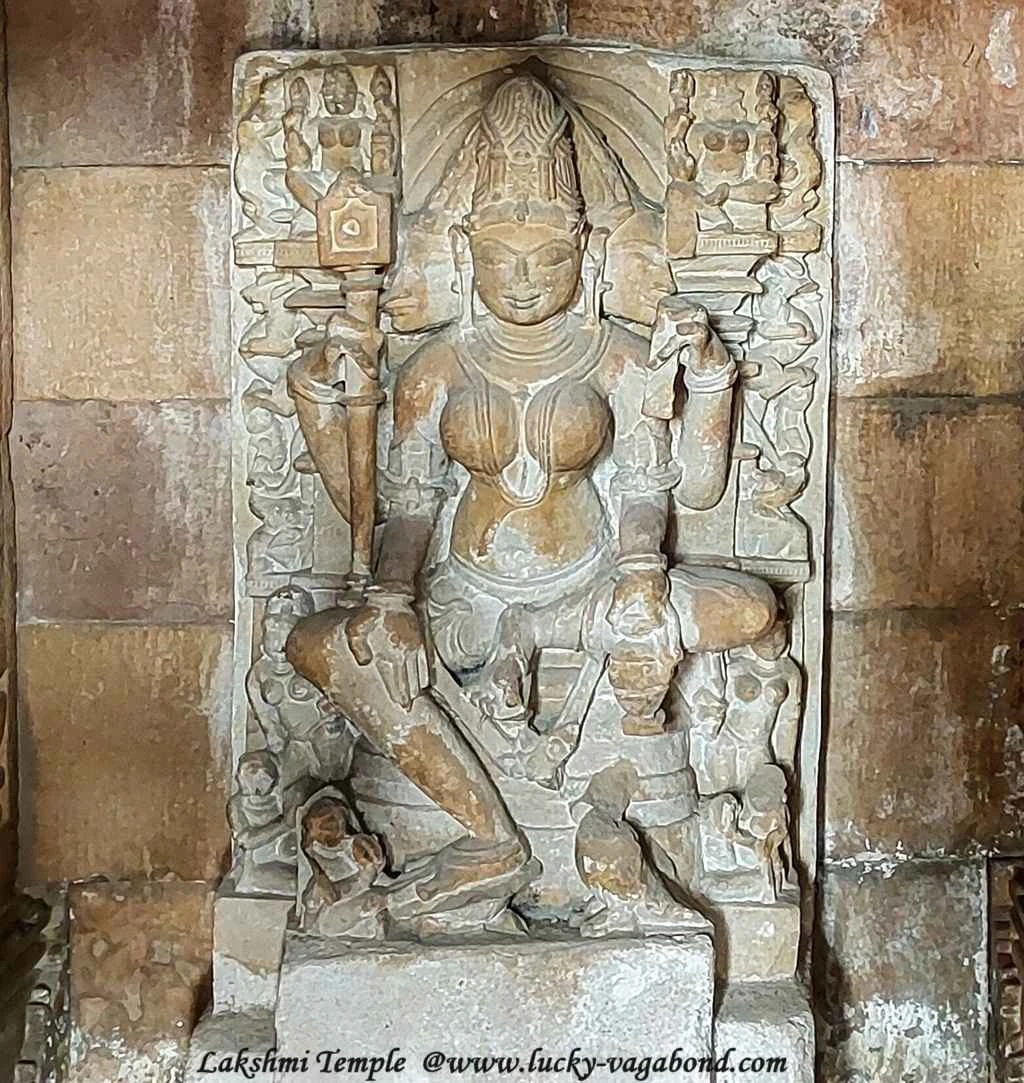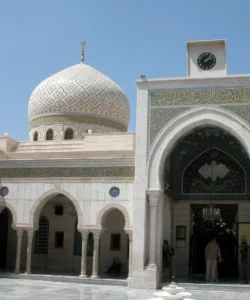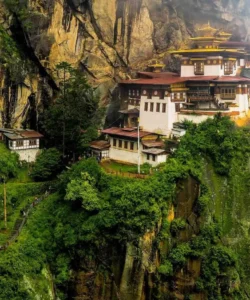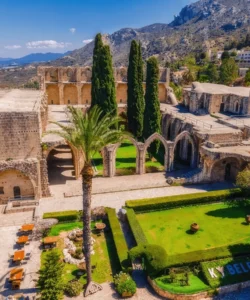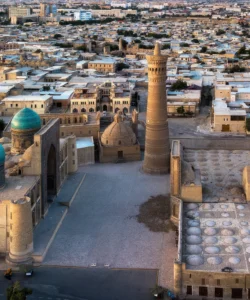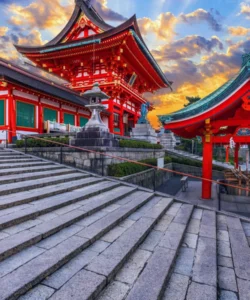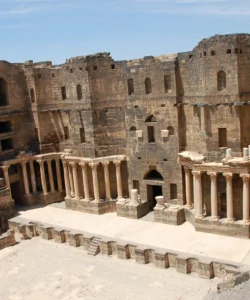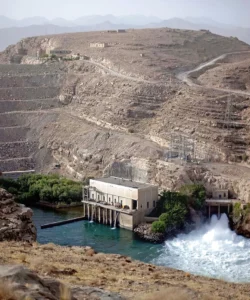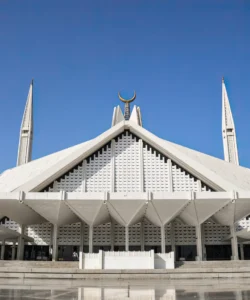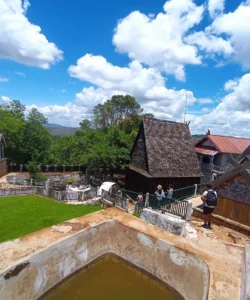The Khajuraho Group of Monuments is an extraordinary collection of Hindu and Jain temples located in the state of Madhya Pradesh, India. Built primarily between 950 and 1050 CE by the Chandela dynasty, these temples are renowned globally for their distinctive Nagara-style architecture and, famously, for their intricate and often explicit erotic sculptures, which are juxtaposed with more conventional depictions of daily life, deities, and mythological scenes.

Name: Khajuraho Group of Monuments
Address: Khajuraho, Chhatarpur District, Madhya Pradesh, India.
The temples are spread over an area of about 6 square kilometers and are divided into three main clusters: the Western Group (the most famous and well-preserved), the Eastern Group, and the Southern Group.
How to Get There:
Khajuraho is a popular tourist destination and is relatively well-connected.
- By Air: The closest airport is Khajuraho Airport (HJR), which is just about 2-5 kilometers from the temple complex. It has direct flights from major Indian cities like Delhi and Varanasi, and sometimes from others like Mumbai. Taxis and auto-rickshaws are readily available at the airport.
- By Train: Khajuraho Railway Station (KURJ) is about 5 kilometers from the temples, with connections to cities like Delhi (e.g., Khajuraho-Hazrat Nizamuddin Express) and Jhansi. From the station, you can hire a taxi or auto-rickshaw.
- By Bus: Khajuraho is well-connected by road to nearby cities like Jhansi, Satna, and Chhatarpur. Regular bus services are available.
- By Car/Taxi: Hiring a private car with a driver from a nearby city (like Agra or Varanasi, often combined with a longer tour) is a popular and flexible option.
- Getting Around the Temples:
- Walking: The Western Group of Temples is largely walkable, as they are spread out in a well-maintained park.
- Auto-rickshaw/Bicycle: For visiting the Eastern and Southern Groups (which are further away), hiring an auto-rickshaw for a half-day or a full day, or renting a bicycle, are good options.
- Entrance Tickets: There is an entrance fee for the Western Group of Temples. The Eastern and Southern Group temples are generally free to enter. Tickets can be purchased at the counters. Children below 15 years often have free entry.
- Best Time to Visit: The ideal time is during the cooler winter months (October to March). The Khajuraho Dance Festival, held annually in February, is a major cultural event where classical Indian dance forms are performed against the backdrop of the illuminated temples.
Landscape and Architecture:
The Khajuraho temples are a culmination of northern Indian (Nagara style) temple art and architecture, distinguished by their intricate carvings and unique structural forms.
- Nagara-Style Temple Architecture: The temples are prime examples of the Nagara style (Northern Indian temple architecture), characterized by a curvilinear shikhara (spire) over the sanctum, which rises in a series of smaller, clustered towers, resembling a mountain range. This creates a visually dynamic and soaring effect.
- Elevated Platforms (Jagati): Each temple is built on a high, ornate terraced platform (jagati), elevating it from the ground. This platform is also profusely carved. Originally, some of these platforms were surrounded by water, making the temples appear as “islands.”
- Axially Aligned Spaces: The temples follow a functional plan with a clear spatial hierarchy:
- Ardhamandapa (Entrance Porch): Often adorned with a makara torana (archway with mythical creatures).
- Mandapa (Main Hall): The assembly hall, sometimes with lateral transepts and projecting windows.
- Antarala (Vestibule): A narrow passage connecting the hall to the sanctum.
- Garbhagriha (Sanctum Sanctorum): The inner sanctum housing the main deity’s idol (often a lingam for Shiva temples or an empty space for a specific deity like Vishnu or Surya).
- Profuse Sculptural Decoration: The most striking feature is the harmonious integration of sculpture with architecture. All surfaces of the temples – from the plinth to the shikhara, inside and out – are profusely carved with anthropomorphic and non-anthropomorphic motifs. These sculptures are almost three-dimensional, standing out from the walls.
- Erotic Sculptures: While they constitute only a small percentage (estimated 5-10%) of the total carvings, the erotic sculptures are the most famous and debated aspect of Khajuraho. They depict various intimate and acrobatic scenes of lovemaking (mithuna), interpreted by scholars as a celebration of life, fertility, a path to spiritual enlightenment (Tantric traditions), or simply reflecting the secular aspects of life.
- Sacred and Secular Themes: Beyond the erotic, the carvings depict a vast repertoire of themes:
- Deities and Celestial Beings: Gods, goddesses, apsaras (celestial nymphs), surasundaris (celestial beauties) in various poses, musicians, and dancers.
- Mythological Scenes: Narratives from Hindu epics and Puranas.
- Daily Life Scenes: Domestic scenes, royal court activities, military processions, hunting, teaching, and other social aspects.
- Animals and Floral Patterns: Realistic and mythical animals, intricate geometric and floral designs.
- Hindu and Jain Temples: The surviving temples are dedicated to both Hindu deities (primarily Shiva, Vishnu, Surya, and various goddesses) and Jain Tirthankaras, indicating a tradition of religious tolerance during the Chandela period.
- Key Temples:
- Kandariya Mahadeva Temple: The largest, tallest (over 31 meters high), and most intricately carved of the Western Group, dedicated to Lord Shiva. It is adorned with over 870 sculptures.
- Lakshmana Temple: Dedicated to Vishnu, it is known for its well-preserved sculptures and is one of the earliest temples built by the Chandelas.
- Devi Jagdambi Temple: Famous for its graceful figures and erotic sculptures, though originally dedicated to Vishnu, it later enshrined Goddess Parvati.
- Chausath Yogini Temple: The oldest surviving shrine, built of granite and circular in plan, dedicated to the 64 Yoginis.
What Makes It Famous:
- UNESCO World Heritage Site: Inscribed in 1986, Khajuraho is recognized for its unique artistic creation and the high quality of its sculpted decor, bearing exceptional testimony to the Chandella culture.
- Erotic Sculptures: The intricate and sensual erotic carvings are arguably the most famous and intriguing aspect of Khajuraho, sparking curiosity and inviting diverse interpretations.
- Pinnacle of Nagara Architecture: The temples represent the culmination of Nagara-style temple architecture in northern India, renowned for their soaring shikharas and the harmonious integration of sculpture and architecture.
- Artistic Masterpiece: The sheer volume, intricacy, and expressiveness of the thousands of sculptures, depicting a full spectrum of human emotions, desires, and spiritual beliefs, make Khajuraho an unparalleled artistic achievement.
- Religious Coexistence: The fact that temples dedicated to both Hinduism and Jainism were built together by the same Chandela dynasty suggests a remarkable tradition of religious acceptance and respect.
- Historical Insight: The secular carvings provide a rare and valuable glimpse into the daily life, culture, and social practices of medieval India.
- Khajuraho Dance Festival: The annual classical dance festival, set against the illuminated temple backdrop, adds a vibrant cultural dimension to its fame.
Differences from Some Other Wonders:
- Erotic Sculpture Prominence: While sculptures are present at many ancient sites, Khajuraho’s explicit erotic carvings are its most distinguishing feature, making it unique among major world heritage sites. Their integration into religious structures prompts unique questions about spirituality, sensuality, and ancient Indian philosophy.
- Nagara Style Culmination: Unlike Dravidian temples (like Meenakshi Amman) with towering gopurams or the singular dome of the Taj Mahal, Khajuraho represents the zenith of the Nagara style, with its distinctive curvilinear shikharas (spires) resembling mountain ranges over the main sanctum, a hallmark of North Indian temple architecture.
- Focus on Hindu & Jain Temples as a Group: While Ellora also has multiple religions, Khajuraho’s “wonder” is a group of freestanding Hindu and Jain temples built over a relatively concentrated period by a single dynasty, contrasting with rock-cut caves carved over centuries.
- Open, Sculpted Exterior: The temples are profusely sculpted on their entire exterior surfaces (including the base platform and walls), rather than just interior walls (Ajanta paintings) or specific monumental gates (like the Red Fort or Gateway of India).
- Philosophical Representation of Life: The temple carvings are often interpreted as representing the four aims of human life (Dharma, Artha, Kama, Moksha), encompassing spiritual teachings, relationships, and even sensual aspects in a holistic manner, which is a specific philosophical depth.
- “Rediscovery” in Modern Era: Like Ajanta, the temples were “rediscovered” in the 19th century after centuries of neglect and overgrowth, adding to their mystical allure and the sense of uncovering a lost civilization.
